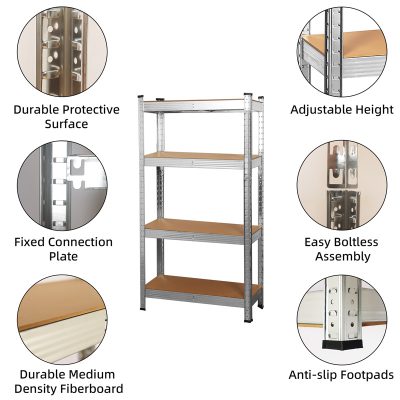Heavy-duty multi-layer shelving racks are essential tools for almost every household and factory. They can store a large number of scattered items and various tools, making your storage room more organized and making it easier to find what you need.
However, choosing an unsuitable shelving rack can be a real headache. If the size doesn’t fit or the weight capacity is insufficient, your storage area can turn into a complete mess.
To help you avoid these issues, Home Pet Essentials has prepared a selection guide.
Understand Your Purpose and Usage Environment
Before choosing a rack, ask yourself a few key questions:
Where am I going to place it? What kind of items will I mainly store on it? Will I need to move it frequently?
- If it’s going to be placed outdoors instead of indoors like in a garage or warehouse, you’ll need to consider rust-proof materials.
- If you need to store a lot of heavy items, the load-bearing capacity is critical.
- If the rack needs to be moved frequently, consider a model that is easy to disassemble or has the option to add wheels at the bottom.
Structure and Load Capacity
Number of layers and height: We recommend choosing racks with 4 or more layers and a height between 1.5m–2m. Of course, you should base your choice on the available space at home — it’s best to measure carefully.
Per-layer load capacity: Don’t confuse it with total load capacity — what you need to check is the weight capacity per layer. If you plan to store heavy items, choose products that can hold ≥150kg per layer.
Overall structure: We suggest choosing racks with H-shaped support posts, reinforced beams, and cross braces, as they offer more stability. Also, check if the product includes anti-tip safety features.
Choosing the Right Material
- Carbon steel / galvanized steel: Common in industrial use, these are rust-resistant, heavy-duty, and not easily deformed.
- Stainless steel: Ideal for environments requiring corrosion resistance, such as humid areas, food factories, or chemical plants.
- Metal frame + wooden/MDF shelves: Affordable with decent load capacity, great for home use, but not suitable for damp environments.
- All-plastic or resin material: Very lightweight but low in load capacity. Suitable for home use, but not for storing heavy items.
Ease of Installation
This is also a very important factor — no one wants to spend half a day assembling a shelving rack.
A rack that is easy to install and adjust typically has the following features:
- Tool-free installation or quick-assembly design
- Adjustable shelf heights
- Accessories such as non-slip feet, reinforced screws, and wall-mounting brackets
Purchase Details
Measure your storage space: Accurately measure the length, width, and height of the area, and leave an extra 10cm of space. Also, consider ceiling height, power outlets, and doors or windows that might interfere.
Consider expandability: If possible, consider the option to connect or extend multiple racks in the future.
In that case, you’ll need to choose products that support modular connection.
Brand and certification assurance: Give priority to racks with SGS / ISO / CE certification — they are generally more reliable. When shopping online, check product reviews for issues like wobbling, poor welding, paint peeling, or rusting.



